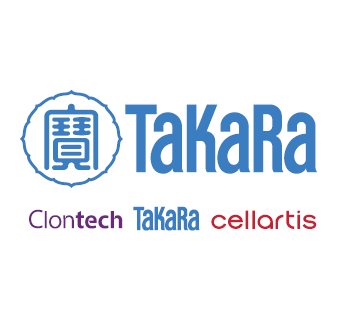iDimerize Reverse Dimerization System
iDimerize Reverse Dimerization System
The iDimerize Reverse Dimerization System lets you control the subcellular localization, catalytic activity, and secretion of a protein of interest in live cells via a membrane-permeant compound. The system includes the iDimerize Reverse Dimerization Vector Set 1, which contains three mammalian expression vectors encoding fusion tags (i.e., self-assembly domains in combination with different localization sequences) that can be easily added to your protein of interest. The aggregation state of the resulting chimeric protein can be controlled by the addition of a small molecule to the cell medium. In the absence of the compound, the tagged protein expressed by the system self-assembles into complexes; when the compound is added to the cell medium, the complexes disaggregate, allowing the now soluble tagged proteins to regain their normal function. The system also includes a membrane-permeant, solubilizing compound, D/D Solubilizer, required for dissolving aggregates, and two linear selection markers for hygromycin and puromycin resistance.
Overview
- Brings the disruption of protein complexes under real-time, small-molecule control
- Plasmid and lentiviral (Lenti-X) vector formats are available
- Previously available from ARIAD as the ARGENT Regulated Secretion/Aggregation Kit
- The D/D Solubilizer performs the same function as the AP21998 ligand, which was previously supplied by ARIAD Pharmaceuticals Inc.; however, it is a different molecule than AP21998
Applications
- Rapid, reversible changes in the subcellular location, aggregation state, and/or biological activity of engineered proteins in vitro or in vivo
- Rapid induction of protein secretion
- Protein trafficking studies
- Inducible animal models and cell lines
How does iDimerize technology work?

How does iDimerize technology work? A chemical inducer of dimerization, or “dimerizer”, is a cell-permeant organic small molecule with two separate motifs that each bind with high affinity to a specific protein module (Dmr domain) fused onto the protein(s) of interest. Addition of the dimerizer brings the chimeric protein subunits into very close proximity to each other, mimicking the activation of the cellular event that dimerization of interest controls. B/B Homodimerizer induces self-association of two copies of the same protein whereas A/C Heterodimerizer induces association of two different proteins. Conversely, a reverse dimerizer ligand (D/D Solubilizer) will bind to and dissociate a protein that aggregates in its absence.
The Reverse Dimerization System incorporates a binding motif (purple) that causes protein aggregation and a dimerizer (yellow) which can be used to disaggregate (solubilize) the proteins

The Reverse Dimerization System incorporates a binding motif (purple) that causes protein aggregation and a dimerizer (yellow) which can be used to disaggregate (solubilize) the proteins. This system can be used to study intracellular transport and to induce regulated secretion.
Inducible secretion of proteins

Inducible secretion of proteins. Fusion proteins containing DmrD domains localize to the endoplasmic reticulum as massive aggregates (left). When the D/D Solubilizer is added, it dissolves the aggregates and allows the protein to be exported through the secretory apparatus (right). To ensure secretion of the authentic protein, a furin cleavage site is positioned between the DmrD domains and the protein of interest. Since furin is exclusively expressed in the trans Golgi, the fusion protein will be processed as it traverses this compartment, resulting in the secretion of the correctly processed protein. This method has been used to induce rapid, transient and tightly regulated secretion of human growth hormone (hGH) and insulin [Rivera, V. M., et al. (2000) Science 287(5454):826–830].
Molecular weights of iDimerize ligands

Molecular weights of iDimerize ligands.
Rivera, V. M. et al. Regulation of protein secretion through controlled aggregation in the endoplasmic reticulum. Science 287, 826–30 (2000).
Volchuk, A. et al. Megavesicles Implicated in the Rapid Transport of Intracisternal Aggregates across the Golgi Stack. Cell 102, 335–348 (2000).


